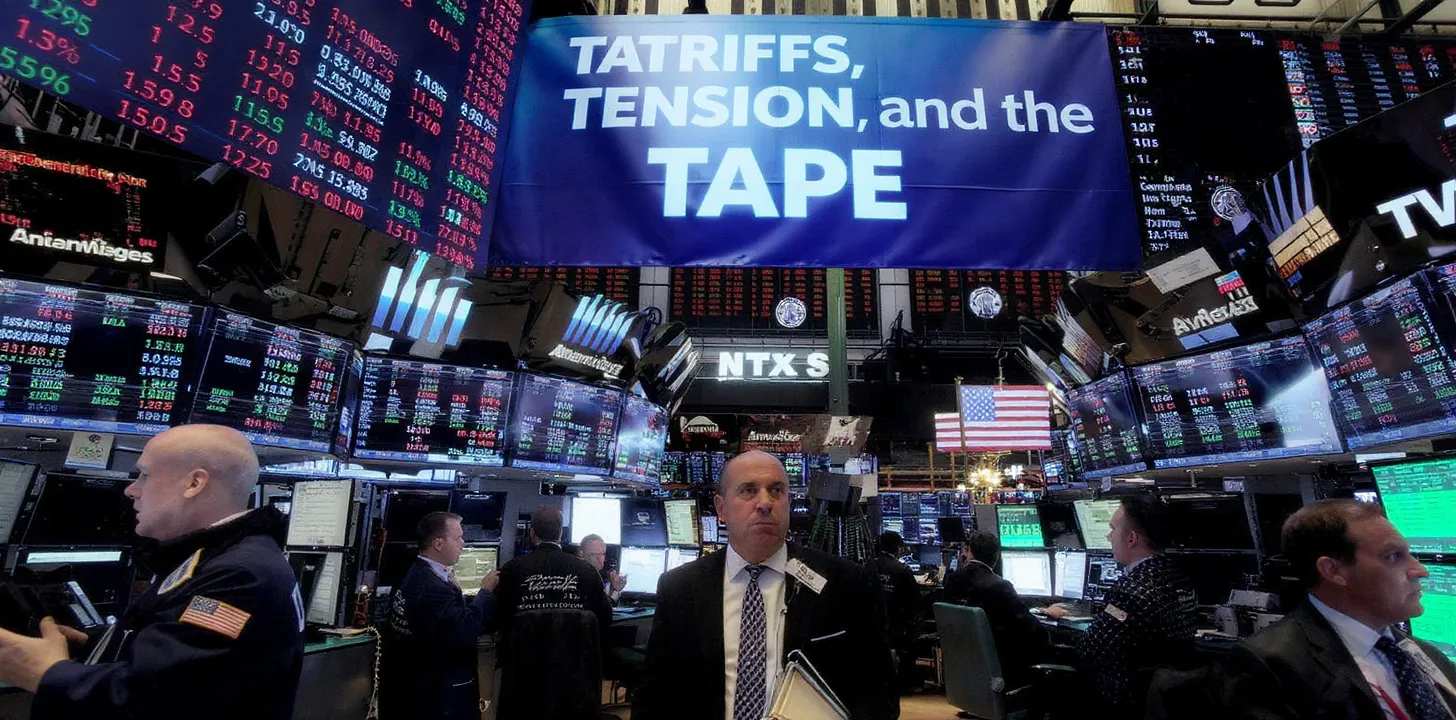From Tariffs to Jobs: A High-Impact End to the Trading Week
As we move past midweek on Wednesday, April 2, global markets brace for a flurry of pivotal events that could swing sentiment dramatically—most notably, the U.S. administration’s plan to impose reciprocal tariffs, fresh employment data, and key PMI readings. These developments come amid an already nervous backdrop, with concerns about slowing growth, elevated price pressures, and a Federal Reserve in watchful mode. This article examines the major catalysts likely to shape currencies, bonds, and equities in the days ahead.
1. Trump’s Tariff Announcement: The Big Uncertainty
All eyes turn to Washington as President Donald Trump unveils a sweeping set of reciprocal tariffs on Wednesday at 4:00 p.m. EDT. Early reports indicate these could cover a broad swath of imports, from raw materials to finished goods—potentially rattling global supply chains.
Impact on the Dollar and Risk Appetite
Safe-Haven Demand: If tensions escalate, the U.S. dollar may strengthen short-term as a traditional haven, while risk currencies (AUD, NZD, CAD) could stumble.
Equities and Commodities: Stocks could slump, particularly in sectors reliant on foreign supply chains or overseas markets. Commodities such as copper might face pressure if trade friction foreshadows softer global manufacturing demand.
Key Watch: Auto tariffs are set to begin the following day, on Thursday, though the White House previously teased an “all-or-nothing” approach. If exceptions or last-minute carve-outs emerge, risk sentiment might rebound.
2. ADP and Labor Market Signals (Wednesday, April 2)
Before Trump’s tariff talk, the U.S. ADP Employment Change sets the stage for Friday’s official nonfarm payrolls (NFP). Analysts expect 105K, up from a modest 77K prior. This figure offers an early barometer of labor demand:
Market Scenarios
Above Expectation: If ADP easily surpasses 105K, the dollar might get a boost on the premise that Friday’s NFP could outperform. Equity markets might see a short-lived bounce if employment optimism trumps trade jitters.
Soft Print: Another sub-100K reading would highlight a cautious hiring environment, intensifying concerns of a broader economic slowdown. The Fed could face growing pressure to pivot dovish, weakening the dollar but potentially supporting stocks on the possibility of easier monetary policy.
3. Thursday’s PMI Cluster: Eurozone, UK, and U.S.
On April 3, updated Purchasing Managers’ Index (PMI) data from major economies will arrive, shedding light on the health of services—the largest sector in many developed markets.
Eurozone Services PMI
Forecast: 50.4, barely in expansion territory. If the reading dips below 50, the euro could face renewed pressure, especially if trade war headlines suggest further headwinds for EU exporters.
UK Services PMI
Expected: 53.2, implying modest growth. Should the release underperform, sterling might slip, particularly amid ongoing cost-of-living strains and budget uncertainty. A beat, however, may embolden the pound if investors sense the economy can withstand any near-term tariff fallout.
U.S. ISM Services PMI
Consensus: 53.0, signaling continued expansion. The services sector has consistently outperformed manufacturing. A stronger result could buoy the dollar if markets decide the U.S. can weather trade turbulence. A sub-50 reading, though unlikely, would roil risk appetite.
4. Friday’s Grand Finale: Nonfarm Payrolls (April 4)
Capping the week, the U.S. nonfarm payrolls (NFP) data arrive on Friday. Consensus points to 128K in job creation, with the unemployment rate at 4.2%. After last month’s mild payroll figure, traders want clarity on whether labor demand is truly decelerating or just pausing.
Potential Outcomes
Upside Surprise: An NFP reading above 150K, or a stable unemployment rate at 4.2% with robust wage gains, might reaffirm the Fed’s reluctance to loosen policy too soon, reinforcing the dollar and possibly capping equities if yields rise.
Disappointment: A figure closer to or below 100K would underscore concerns from Tuesday’s ISM manufacturing and JOLTS job openings, feeding talk of an early Fed pivot. The dollar could soften, while risk assets might attempt a rally on prospects of easier policy.
Fed Chair Powell’s Remarks
After the data, Fed Chair Jerome Powell is set to speak, offering immediate policy insights. Should Powell maintain a hawkish stance despite weaker data, the USD might hold firm. Conversely, a dovish pivot could spark a greenback selloff into the weekend.
5. Wider Implications for Currencies and Commodities
EUR and GBP: Both face tricky waters. The euro has fended off recession fears so far, but any new tariff announcements might hamper big EU exporters, while soft PMIs hamper near-term rate-hike bets. Sterling watchers weigh the possibility of an underwhelming services PMI and a slower labor market, even as the Bank of England stands pat for now.
AUD, NZD, CAD: Commodity-linked currencies remain vulnerable to Trump’s global tariff push. Any conciliatory tone from the White House could briefly lift them, but lingering fears of a trade war keep them on edge.
Gold: The metal soared to record highs recently but trimmed gains as markets awaited clarity on tariffs and the Fed. Renewed global jitters could see a flight into bullion, especially if new data underscores stagflation risks.
Oil: Tariff escalations typically weigh on demand expectations, though supply factors remain crucial. Any sign of deeper Middle Eastern tensions or OPEC+ output changes may overshadow trade anxieties.
6. Conclusion
With fresh PMIs, a key jobs report, and U.S. tariff bombs set to drop, the coming days promise a maelstrom of data-driven moves and policy-influenced volatility. The question is whether robust U.S. labor numbers and services activity can offset the negative sentiment from looming tariff showdowns. Meanwhile, Europe and the UK remain vulnerable to external shocks but might stage a resilience narrative if PMIs beat expectations.
Ultimately, the interplay between job figures, inflation signals, and White House trade announcements will define the market’s mood. By the end of this chaotic week, investors will either see a world economy still powering forward—or glimpses of cracks forming under the weight of trade hostilities, inflationary crosscurrents, and tightening financial conditions.



